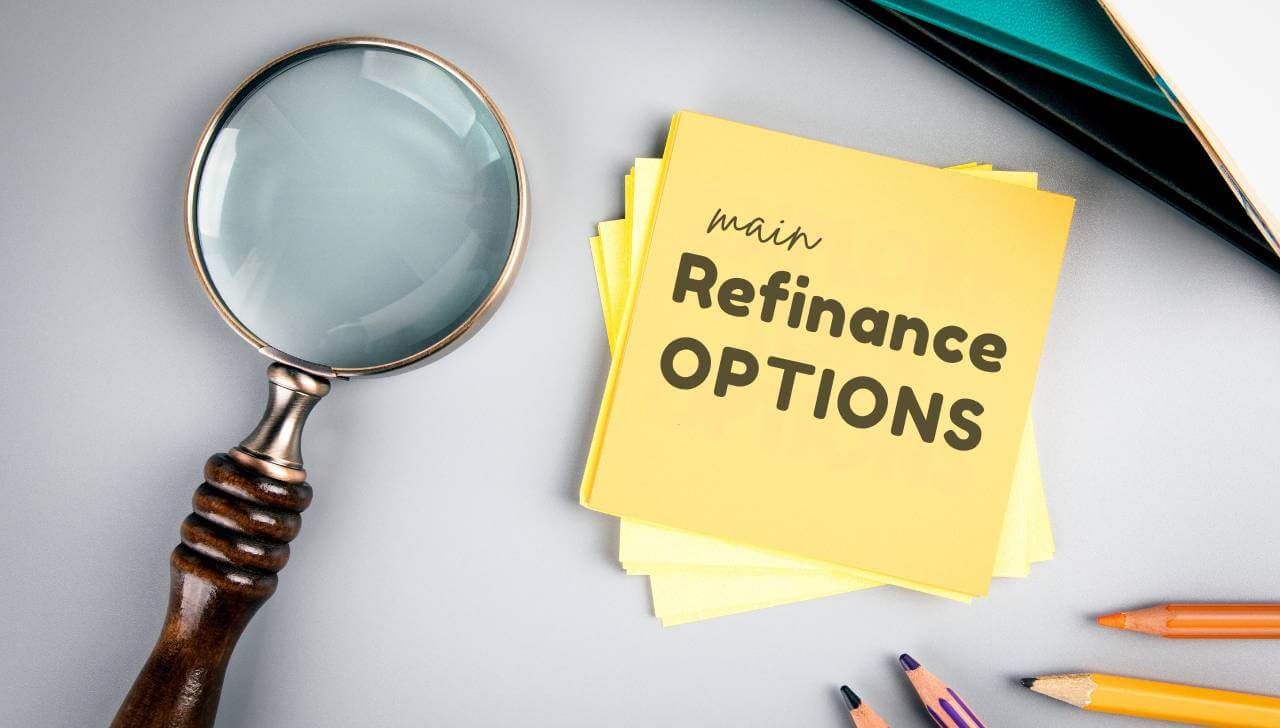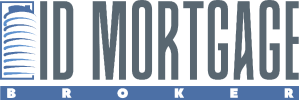Key Takeaways:
- Refinancing replaces your current mortgage with a new loan that has different terms to help you lower your monthly payment or pay off your house faster.
- It is usually a good idea to refinance if interest rates have dropped by at least one percent or if your credit score has improved since you bought your home.
- Make sure you calculate your break-even point to confirm that your monthly savings will add up to more than the upfront closing costs before you move or sell.
Many California homeowners consider refinancing when rates move, income changes, or their monthly cash flow feels tight. A smart refinance can lower the payment, shorten the payoff timeline, or unlock equity for renovations or debt consolidation. The key is to check potential savings against total costs and to know your break-even point.
At ID Mortgage Broker in Burbank, our local team reviews your current loan, credit, and home value. We show simple side-by-side options with your new payment, total costs, and savings over time. We explain each tradeoff in plain language so you can choose with confidence.
In the sections below, we will cover when refinancing makes sense, the main loan options, and how the process works for California homeowners.
Quick Links:
- What Is Refinancing?
- When to Refinance
- Best Time to Refinance
- How Refinancing Can Help You Save
- How to Refinance in California
- Main Refinance Options
- California Refinance Insights
- Is Refinancing Right for You?
- FAQs
What Is Refinancing?
Refinancing replaces your current home loan with a new one. The new loan can change your interest rate, payment, or term. It differs from a recast or an extra principal payment.
A recast keeps the same loan and rate, then resets your payment after a lump sum to principal. An extra principal payment reduces the balance but keeps your payment and payoff date. Refinancing changes the loan and starts new terms.
- You get a new loan with new terms.
- You can change your rate or loan length.
- Your old loan is paid off.
If you want to know how to refinance a mortgage, work with a local guide. For a refinance broker near me, contact ID Mortgage Broker in Burbank.
When to Refinance
Know when to refinance your mortgage by watching four signals. Track rates, check your credit, review your home equity, and test your break-even point.
The break-even point is the month you recover upfront costs through lower payments. If you plan to stay past that month, the math often works in your favor.
A refinance calculator lets you compare scenarios. Enter your current balance, interest rate, new rate, loan term, and estimated costs. The tool returns your new payment, total interest, and the months to break even. Try a few rate and term options to match your budget and timeline.
Use this quick checklist:
- Interest rates drop at least 1%.
- The credit score has improved since the last loan.
- Home equity increases.
- Debt consolidation opportunity.
These signs do not guarantee approval, yet they signal a closer look. Match the calculator results with your plans for the home. Moving soon may not fit a long break-even timeline. Staying for years can turn steady monthly savings into strong total savings.
Pro Tip:
- Be honest with yourself about your “move date.” If your break-even point is 30 months away, but there is a chance you will move for work or upgrade your home in two years, the refinance will likely cost you money rather than save it.
For more ideas that target monthly savings, see ways to lower your mortgage payments.
Best Time to Refinance
The best time to refinance ties to market trends and life events. Watch for lower rates, stable employment, and a stronger credit score. A new child, a raise, or paid-down debt may shift your goals and the loan terms that fit.

For mortgage refinance in California, timing also follows local patterns. Spring and early summer bring a busy purchase season that may affect pricing.
Broader forces such as inflation and Federal Reserve policy move rates up or down. Local job growth and home values influence approval and pricing. Align these signals with how long you plan to stay in the home.
Tip: “Use a mortgage rate lock to secure your deal once you’re ready.”
Pro Tip:
- Boost your credit score rapidly before applying by paying down revolving credit card balances. Lowering your credit utilization below 30% a month or two before the lender checks your credit can sometimes unlock a better interest rate tier.
Learn how a mortgage rate lock can protect your refinance so short-term swings do not change your costs.
How Refinancing Can Help You Save
Lower Your Monthly Payment
Many homeowners refinance to lower payments when rates fall. A lower rate reduces principal and interest. For example, on a $400,000, 30-year loan, moving from 7% to 6% can cut the monthly principal and interest by about $260.
You can redirect that cash to savings, repairs, or other goals. If you also need funds for projects, review cash-out refinance options in California to compare the tradeoffs.
Pro Tip:
- Check if your home value has risen enough to remove Private Mortgage Insurance (PMI). Even if the interest rate drop is small, refinancing into a loan without PMI can save you hundreds of dollars a month on top of the interest savings.
Pay Off Your Loan Faster
You can refinance to shorten the term and build equity faster. Changing a 30-year loan to a 15-year loan raises the monthly payment but cuts total interest over time. This path fits homeowners who want an earlier payoff and can handle a higher payment.
Benefits include:
- Build equity faster.
- Save on long-term interest.
- Own your home sooner.
See how this applies to you with a refinance to pay off your mortgage faster.
Access Home Equity
A cash-out refinance replaces your current loan with a larger one and gives you the difference in cash at closing. Many California owners use it for renovations, debt consolidation, or a new investment.
It can also support liquidity planning if income varies or relies on bonuses. Compare the new payment, interest costs, and any tax or budget effects before you proceed. A clear side-by-side view helps you decide if the cash is worth the new terms.
How to Refinance in California
Learning how to refinance a mortgage is easier with a local guide. A Burbank refinance specialist understands California appraisals, escrow timelines, and property tax rules. If you search for a refinance broker near me, choose a team that explains each step and keeps you updated.
Step-by-Step Process
- Check your credit and equity.
- Set refinance goals such as rate, term, or cash out.
- Collect key documents like W-2s, pay stubs, bank statements, and homeowners’ insurance.
- Compare rates and programs with your broker.
- Lock your rate, sign disclosures, and close your new loan.
ID Mortgage Broker coordinates each step locally. We review credit and income, order the appraisal when needed, and match the closing timeline to your schedule.
You will see clear numbers for your new payment, total costs, and the months to break even. If upfront costs are a concern, ask about no-closing-cost refinance options and how they affect the rate.
Most refinances follow a simple path. You set goals, provide documents, and review your options. We guide you to the loan type that fits how long you plan to stay in the home.
Many clients switch to a fixed rate for stable payments. Others keep a longer term to protect the monthly cash flow. With a local broker guiding the process, you can close with confidence and avoid surprises.
Main Refinance Options
A mortgage refinance in California usually follows three paths. You can refinance from ARM to fixed for stable payments, use a cash-out refinance to access equity, or use a program that matches your loan type and size.

Switch from ARM to Fixed
An adjustable-rate loan can reset to a higher rate later. Moving to a fixed rate locks your payment for the rest of the term and makes planning easier.
Reasons to switch:
- Rates expected to rise.
- You plan to stay long-term.
- You prefer predictable payments.
Learn the details of switching from an ARM to a fixed-rate mortgage and how it affects your budget.
Pro Tip:
- Don’t wait until your Adjustable Rate Mortgage is about to reset before you call a broker. Start the process 60 to 90 days before your fixed period ends so you can lock in a new rate before your payment potentially jumps.
Cash-Out Option
A cash-out refinance replaces your current loan with a larger one and gives you the difference in cash at closing. Many homeowners use the funds for debt consolidation, home upgrades, or new investments.
This path changes your balance and payment since you borrow more. A standard rate-and-term refinance aims to lower the rate or adjust the term without pulling cash. Compare total costs, the new payment, and your long-term goals before you decide.
Specialty Loans
Some borrowers refinance through specific programs. FHA and VA refinances have their own rules and benefits. Jumbo refinances serve higher loan amounts and may use different guidelines on reserves, credit scores, and appraisal reviews. Check program eligibility with your broker so you pick the path that fits your credit, equity, and timeline.
California Refinance Insights
For a mortgage refinance in California, understand how property taxes and escrow work. Under Proposition 13, your assessed value stays tied to your original purchase with limited yearly increases.
A refinance does not reset that base. After closing, your servicer reviews escrow on its regular cycle. Changes to the tax and insurance portion may appear a few months later.
- Refinance won’t affect property taxes.
- Escrow and impound adjustments take time.
- Regional market trends affect rate eligibility.
Investors can use refinancing as a strategy to grow their real estate portfolio to plan next steps.
Pro Tip:
- Ask your broker about a “reissue rate” for your title insurance. Since you likely bought a title policy when you purchased the home, many title companies in California offer a discount on the new policy required for the refinance, which can save you money on closing costs.
Is Refinancing Right for You?
Use this quick checklist to answer: Should I refinance my mortgage today?
- Your rate is 1% higher than the current market.
- You plan to stay 5+ years.
- You improved your credit score.
- You want to access equity or reduce payments.
If several boxes fit, connect with a local expert. For a refinance broker near me, ID Mortgage Broker can review your numbers and goals in plain terms. Talk to a Burbank refinance specialist at ID Mortgage Broker to see how much you could save.
FAQs
Is now the best time to refinance in California?
It really depends on your current mortgage rate, your goals, and how long you plan to stay in your home. If rates have dropped or your credit score has improved, refinancing could help lower your monthly payment or shorten your loan term. It also matters how long it takes to recover the upfront costs. If you expect to stay in the home beyond that point, refinancing can make good financial sense. A local broker can review your situation and help you decide if now is the right moment.
How much does refinancing cost?
Most refinances cost between 2% and 5% of the total loan amount. This usually includes appraisal, title, and lender fees. Some lenders offer no-closing-cost options where the fees are rolled into the new loan or offset with a slightly higher rate. Always look at both the upfront cost and the long-term savings before choosing a program.
Does refinancing hurt credit?
Refinancing may cause a small, short-term drop in your credit score when lenders check your report. The good news is that if you apply with multiple lenders within a short period, it usually counts as one inquiry. Paying your new mortgage on time can help your score recover quickly and even improve over time.
Can I refinance soon after buying a home?
Yes, you can. Most lenders allow you to refinance after six to twelve months of consistent payments. The exact timeline depends on your loan type and your lender’s guidelines. Some government-backed loans, such as FHA or VA, may allow refinancing sooner. Before moving forward, check that the new loan will truly benefit you, whether by lowering your rate, reducing your term, or freeing up equity.




